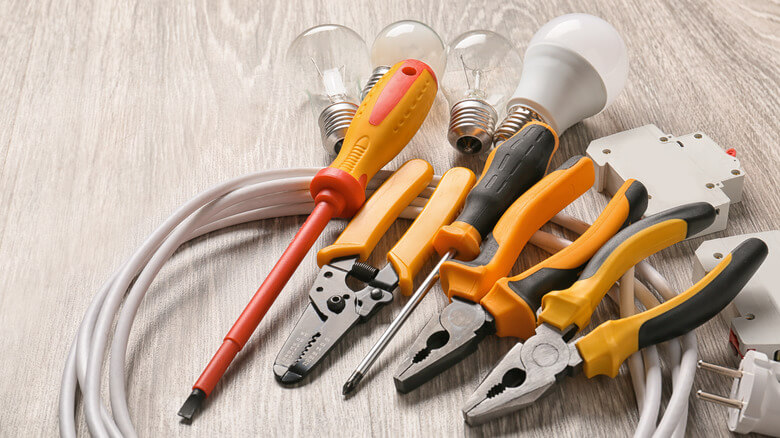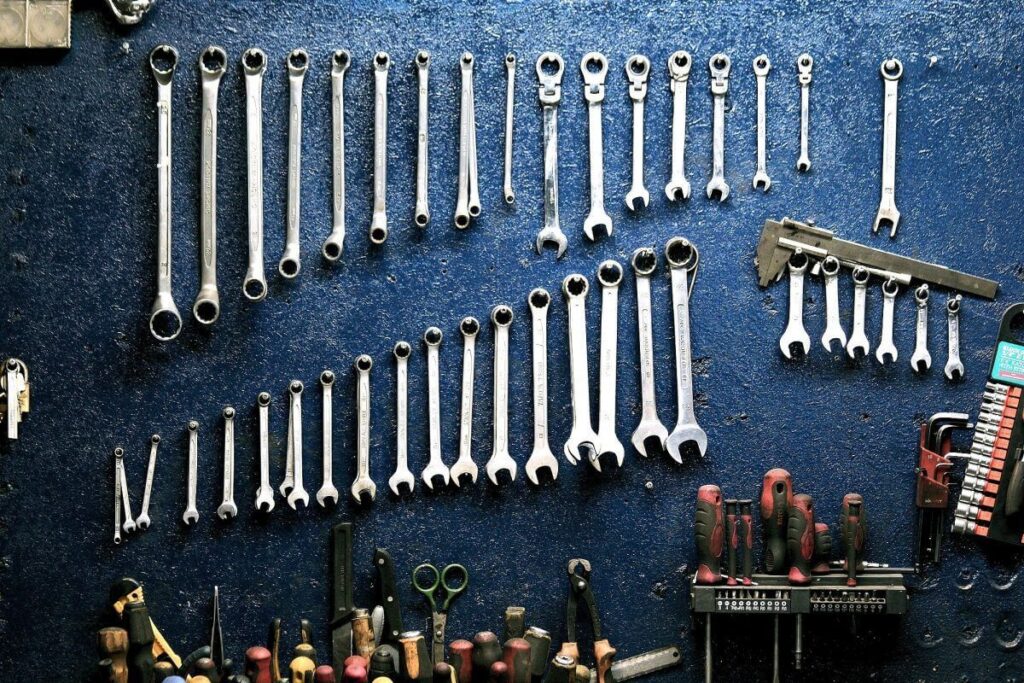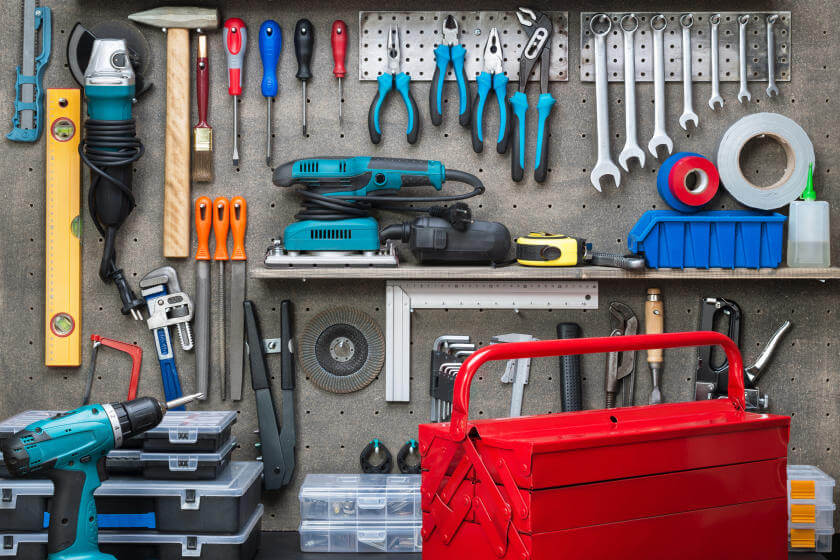

Every homeowner’s worst nightmare is a malfunctioning appliance. You know the feeling – you load your dishwasher, press the start button, and nothing happens. Or perhaps your trusty old refrigerator isn’t as cold as it used to be, and your clothes dryer sounds like it’s ready to take off into space. These situations can be both frustrating and costly, but fear not. With the right tools and a dash of DIY spirit, you can often save the day – and your hard-earned cash!
In this comprehensive guide, we’ll explore the essential appliance repair tools that every homeowner should have. These tools will help you diagnose and fix common issues with household appliances, from minor annoyances to major problems. Whether you’re a seasoned DIY enthusiast or a newcomer to the world of appliance repair, this guide has got you covered.
Understanding Appliance Repair Tools: What Are They, and Why Do You Need Them?
Before we delve into the specifics, it’s important to understand the role of appliance repair tools. These tools are like the trusty sidekicks that come to the rescue when your appliances decide to misbehave. They allow you to open up, inspect, and repair various components of your appliances, saving you from costly service calls and replacements.
But what’s in your toolkit, and why do you need it? Let’s break it down:
The Basics: Must-Have Appliance Repair Tools
- Screwdriver Set: Your screwdriver set is the unsung hero of appliance repairs. It’s the tool that can pop open the back of your TV, remove pesky screws on your washing machine’s panel, or tighten those loose handles on your fridge.
- Multimeter: Electrical Sherlock Holmes: Ever wondered if your oven’s heating element is on the fritz? The multimeter acts like a detective, measuring voltage, current, and resistance. It’s the Watson to your Sherlock Holmes in electrical mysteries.
- Adjustable Wrench: The Grip Master: When it’s time to loosen or tighten nuts and bolts, the adjustable wrench is your go-to guru. It’s like the firm handshake you need for a job well done.
- Pliers: The Multitasking Marvel: Pliers are the real multitaskers in your toolkit. Need to cut wires, twist them, or grip onto something stubborn? These fellas can do it all and then some.
- Appliance Thermometer: Temperature Whisperer: Sometimes, your fridge feels like the Arctic, and your oven’s hotter than the Sahara. That’s where an appliance thermometer steps in, ensuring your appliances are living their best temperature-controlled lives.
- Hex Key Set: Tighten Loose Screws: When that pesky hex screw won’t cooperate, reach for your hex key set. It’s like the secret key to unlock your appliances’ mysteries.
- Putty Knife: The Gunk Fighter: Appliance repairs can get messy, with old gunk and grime lurking around. A putty knife is your trusty sidekick to scrape off that stubborn residue.
- Nut Driver Set: Nut-tightening Whiz: Loose nuts and bolts begone! With a nut driver set, you can quickly and efficiently tighten things up without breaking a sweat.
- Pipe Wrench: Plumbing Problems Be Gone: Leaky pipes? No problem! A pipe wrench can handle all your plumbing issues without a hitch.
- Electrical Tape: The Quick Fixer-Upper: Appliance cords looking a bit shabby? Electrical tape can work its magic, keeping things safe and sound.
In-Depth Look at Essential Appliance Repair Tools

Now that you have a grasp of the basics, let’s take a closer look at each of these indispensable tools.
Screwdriver Set
Your screwdriver set is a versatile workhorse. It comes in various shapes and sizes, each suited to a specific task. Here’s a quick rundown of the types of screwdrivers you’ll want to have in your kit:
- Flathead Screwdrivers: These have a flat, narrow tip and are ideal for turning slotted screws. You’ll commonly encounter these when dealing with electrical connections.
- Phillips Screwdrivers: These have a cross-shaped tip and are designed for Phillips head screws, which are found in many appliances and electronics.
- Torx Screwdrivers: These have a star-shaped tip and are commonly used in appliances and electronics, such as game consoles and laptops.
- Hex Screwdrivers: These are essential for hexagonal socket screws, commonly found in furniture and some appliances.
A good screwdriver set ensures you have the right tool for the job, whether it’s removing a panel, tightening a loose screw, or opening up an appliance to diagnose an issue.
Multimeter: Your Electrical Detective
The multimeter is your go-to tool for diagnosing electrical issues in appliances. It can measure voltage, current, and resistance, allowing you to identify problems with wiring, components, and circuits. Here’s how it works:
- Voltage Measurement: You can use the multimeter to check if an electrical component is receiving the correct voltage. If your oven isn’t heating up, for example, this tool can help you determine if it’s a power supply issue.
- Current Measurement: Measuring current helps you identify any issues with the flow of electricity within an appliance. This is crucial when dealing with motors and heating elements.
- Resistance Measurement: Resistance measurements are valuable for pinpointing problems like a faulty heating element in a dryer or a burnt-out component on a circuit board.
Using a multimeter might seem a bit intimidating at first, but it’s a skill that’s worth acquiring if you’re serious about appliance repair. It can save you a lot of time and money in the long run.
Adjustable Wrench: The Handy Nut and Bolt Tightener
The adjustable wrench, also known as a crescent wrench, is a versatile tool used for turning nuts, bolts, and other fasteners. It’s particularly handy when you need to:
- Tighten or loosen nuts and bolts that hold parts of your appliances together.
- Adjust the level of your appliances by turning their feet.
- Remove or install plumbing fittings.
When selecting an adjustable wrench, ensure it’s of high quality and has a smooth-moving jaw adjustment mechanism to prevent slippage while you work.
Pliers: The Swiss Army Knives of Hand Tools
Pliers are a fundamental part of any tool kit, and there are various types, each designed for specific tasks. Here are some common types of pliers and their uses:
- Needle-Nose Pliers: These are ideal for reaching tight spaces and gripping small objects. You can use them for tasks like bending wires and holding small components.
- Channel-Lock Pliers: These adjustable pliers are handy for a wide range of tasks, from tightening plumbing connections to gripping larger objects.
- Wire Cutters: As the name suggests, wire cutters are designed for cutting wires cleanly and precisely. This is essential for tasks like replacing a frayed power cord.
- Slip-Joint Pliers: These versatile pliers have two or more adjustment points, making them useful for various tasks, from tightening plumbing connections to holding objects securely.
Pliers are incredibly versatile and can be used in electrical, plumbing, and mechanical repair work. Make sure you have a few different types in your toolkit to cover all your bases.
Appliance Thermometer: Keeping It Cool (or Warm)

Your refrigerator should keep your food cold, and your oven should heat up as intended. If you suspect your appliances aren’t maintaining the right temperature, an appliance thermometer can help you verify your suspicions.
Simply place the thermometer inside your appliance and monitor the temperature. If it’s too cold or too hot, you may need to adjust the appliance’s settings or, in some cases, replace a thermostat or heating element. An appliance thermometer is an affordable tool that can prevent food spoilage and save energy.
Hex Key Set: Tackling Those Hex Screws
Hex screws, also known as Allen screws, are commonly found in furniture and some appliances. They have a hexagonal socket head that requires a hex key (also known as an Allen key) for removal and installation. A hex key set is a must-have if you own furniture or appliances with hex screws, as these can be notoriously tricky to work with.
Whether you’re assembling a new piece of furniture, fixing a loose handle, or disassembling an appliance, a hex key set is your secret weapon.
Putty Knife: Scrape Away the Gunk
Appliance repairs can be messy, and accumulated gunk and grime can impede their performance. A putty knife, with its flat, flexible blade, is the perfect tool for scraping off stubborn residue and debris. You’ll find it especially useful when:
- Cleaning the gasket and seals of your dishwasher.
- Removing adhesive residue from an old part that you’re replacing.
- Scraping off grease and grime from your stovetop or oven.
A putty knife is easy to use and is a crucial tool for maintaining your appliances’ cleanliness and functionality.
Nut Driver Set: Tighten with Precision
Loose nuts and bolts are common culprits in appliance repairs. A nut driver set is your solution for efficiently tightening these fasteners. This set typically includes a handle and a range of interchangeable socket attachments to fit various sizes of nuts and bolts.
Whether it’s tightening a wobbly refrigerator door handle or securing the motor in your washing machine, a nut driver set offers the precision and torque needed to get the job done right.
Pipe Wrench: Mastering Plumbing Problems
Leaky pipes are another household woe that can often be addressed without calling a plumber. A pipe wrench is designed for gripping and turning pipes and fittings. When you encounter a plumbing issue, such as a leaky faucet, a loose joint, or a faulty valve, a pipe wrench can help you disassemble and reassemble the necessary components with ease.
When working with a pipe wrench, remember to turn it in the direction that tightens the grip to avoid damaging the pipe or fitting.
Electrical Tape: Quick Fix for Cord Issues
Over time, appliance cords can become frayed or damaged, presenting a safety hazard. Electrical tape is a handy solution for quick fixes in such situations. It provides insulation and protection for exposed wires and can prevent electrical shock or fires.
However, it’s important to note that electrical tape is a temporary solution. If you find a damaged cord, it’s best to replace it entirely to ensure long-term safety and reliability.
In Summary: Be the Ultimate DIY Hero in Your Home
Armed with these essential appliance repair tools, you can be the ultimate DIY hero in your home. No more appliance meltdowns, just handy fixes and a sense of accomplishment. But remember, safety first! If a repair seems too complex or daunting, don’t hesitate to call in the professionals. Your safety is always a top priority.
So, go forth, equip your toolkit, and conquer those appliance woes with confidence! With these tools by your side, you’ll be well-prepared to tackle common appliance problems, troubleshoot issues, and perform necessary repairs. By taking a hands-on approach to appliance repair, you can not only save money but also gain valuable skills that will serve you well in the long run.
Frequently Asked Questions (FAQ) – Appliance Repair Tools Every Homeowner Should Have
Got questions about essential appliance repair tools? We’ve got answers! Check out this FAQ to get the lowdown on what you need to know.
1. What are appliance repair tools, and why do I need them?
Answer: Appliance repair tools are a set of specialized instruments designed to help homeowners diagnose and fix common issues with household appliances. These tools are essential for opening up, inspecting, and repairing various components of appliances, saving you from costly service calls and replacements.
2. Can I use regular tools for appliance repair, or do I need specific ones?
Answer: While some regular tools may work for basic repairs, specific appliance repair tools are designed to handle the unique needs of household appliances. Using the right tools not only ensures safe and effective repairs but also prevents damage to your appliances.
3. Are these tools suitable for all types of appliances?
Answer: Most of the essential tools mentioned in this guide can be used for a wide range of appliances, from refrigerators and ovens to washing machines and dishwashers. However, some appliances may require additional specialty tools for specific repairs.
4. Is it safe for me to attempt DIY appliance repairs?
Answer: DIY appliance repairs can be safe and cost-effective for minor issues, such as tightening screws or replacing worn-out parts. However, it’s crucial to prioritize safety and understand your limitations. If a repair involves complex electrical work or poses a potential safety risk, it’s best to consult a professional.
5. How do I know when to call a professional instead of attempting a DIY repair?
Answer: You should consider calling a professional when:
- The repair involves gas appliances or complex electrical work.
- The issue requires specialized diagnostic tools.
- You’re not confident in your ability to make the repair safely.
- The appliance is still under warranty, and DIY repairs may void the warranty.
6. Are there online resources or tutorials for using these tools for appliance repair?
Answer: Yes, there are plenty of online resources, tutorials, and video guides available that can provide step-by-step instructions on using these tools for various appliance repairs. However, ensure that the source is reputable and reliable.
7. Can I buy these tools at a local hardware store, or should I shop online?
Answer: You can find most of these tools at your local hardware store or home improvement center. Shopping in person allows you to see the tools and get a feel for their quality. However, you can also purchase them online if you prefer the convenience of online shopping.
8. Do I need any prior experience to use these tools effectively?
Answer: While experience can be helpful, many appliance repair tasks are relatively straightforward and can be learned through online resources and tutorials. As long as you follow safety precautions and the provided instructions, you can effectively use these tools.
9. Can I save money by performing my appliance repairs with these tools?
Answer: Yes, you can potentially save a significant amount of money by performing your appliance repairs. Most repair services charge for both labor and parts, so tackling minor repairs with the right tools can be cost-effective. However, for complex or warranty-covered repairs, consulting a professional might be the best choice.
10. What are the top safety tips for using these tools for appliance repair?
Answer: Safety should always be a priority. Here are some essential safety tips:
- Always unplug the appliance before working on it.
- Use personal protective equipment like gloves and safety goggles.
- Familiarize yourself with the appliance’s user manual and safety guidelines.
- If you’re uncomfortable with electrical work, seek professional help.
- Store your tools in a safe and organized manner to prevent accidents.
